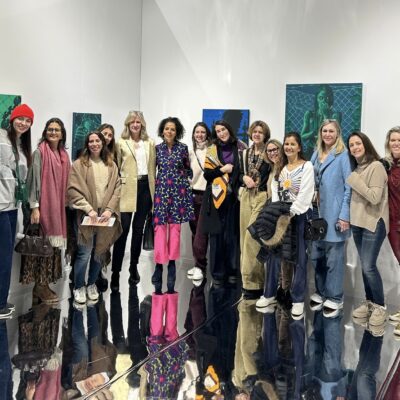The promise of global interconnectedness on the internet often masks a far less alluring reality—the crushing alienation that can arise. With the ubiquity of social media in this day and age, the fear of ridicule, stigma, and rejection for violating social codes and societal dictates or passing trends can become all-consuming. The permanent preoccupation with oneself and the fear of being misjudged and undervalued becomes the emotional norm of our modern times, ostensibly and tragically ending in resignation and perhaps even in suicide. The mere thought of a potentially offensive post on social media going viral can stir a vicious circle of humiliation and reinforce biographically caused shaming. And the repercussions can be far-reaching or even life-altering. The acute impact of emotional coercion, which has the potential to trigger our innermost fears by preying on our vulnerability, forms the basis for the sculptures in my series “Fractured Reality.”
Belonging to that body of work, the bronze sculpture Shame speaks to the sense of worthlessness that can stem from the experience of disgrace. The tormented genderless figure, whose hands with fingers splayed reach up to shield the face, embodies the paralytic power of this universal emotion. Losing face, so to speak, unable to face the glaring gaze of smug judgment, the sculpture’s twisted withered limbs and contorted posture invite the viewer to contemplate the crippling effects of shame, literally wrought on the tortured body. Singled out for non-compliance, unworthiness, deviance, depravity, the outcast suffers an excruciating, silent fate. Human potential stymied, body and soul diminished, the personification of this debilitating mental state, while pervasive in our contemporary global culture, also harks back to the beginnings of time. Mired in remorse and wallowing in regret, the skeletal presence hunches over, prevented from soaring into space like the sculpture Flying into Life, the subject of my last column.

Detail of Masaccio, Expulsion from the Garden of Eden, ca. 1427. Image via Wikimedia Commons.
Visual expressions of shame abound in Western art. The act of shaming to punish undesirable, deviant behavior, or abuses of power runs the gamut from the beleaguered student forced to stand in the corner of the classroom wearing a dunce cap to artist Francisco de Goya’s indictment of the Spanish Inquisition in paintings such as The Inquisition Tribunal (1812-19), a unflinching attack on the authority of the Catholic church and the complicity of absolute monarch Ferdinand VII. Whereas Goya denounces the tyranny of the church, powerful depictions of shame based on biblical narratives serve to inculcate and dominate. In his fresco panel The Expulsion from Eden of Adam and Eve (1420) painted for the Brancacci Chapel in Florence, Masaccio movingly captures the shame of the first couple’s downfall. Equally compelling treatments of the theme contribute to this corpus, such as Michelangelo’s combined episodes of The Fall of Man and Expulsion from Eden (1509-10) in a fresco panel of the Sistine Chapel ceiling in the Vatican.

Sandro Botticelli, The Birth of Venus, c. 1484-1486. Google art project.
In contrast to the negative emotions such as shame often associated with the bare body in Christian imagery, the ancient Greeks celebrated the naked figure, especially male, as the epitome of strength, beauty and perfection. With the rise of humanism and the return to classical ideals during the Renaissance, artists drew inspiration from Greek and Roman models, thus embracing rather than deriding the human body in its natural state. In his iconic painting Birth of Venus (c. 1484), Botticelli elevates the female nude in an entirely different kind of origin story, that of the mythological goddess of love and beauty, born fully formed from the sea and blown to shore by the god of wind Zephyr.

Dr Gindi, Shame, 2021. Bronze, 76 x 10 x 14 cm.
Just as Botticelli’s portrayal of beauty offered a different narrative, drawing inspiration from the past to herald cultural renewal, my sculptural project invites viewers to envision another way of perceiving the world, to shift their experience of human frailty and seek true connection, to discover the interconnectedness of the limitless universe, overcoming pathologic self-indulgence and induced validation by others. The distraught, downtrodden figure of Shame elicits contemplation of this unbearable burden that blocks the path to openness and hinders the encounter with the unity of infinity. Instilling comprehension and compassion, the sculpture allows us to confront our inherent fragility, to recognize and accept our common vulnerability. We are too often in thrall to our emotions, and should liberate ourselves from their oppressive hold. Only by facing this inner turmoil can we begin to experience release from the tyranny of shame in all contexts and rise above our perceived limitations to achieve the boundlessness of being. The time has come to lower the hands which covered our face in order to look ahead.
To find out more about Dr Gindi’s work, please go to www.dr-gindi.com or @gindisculptor




